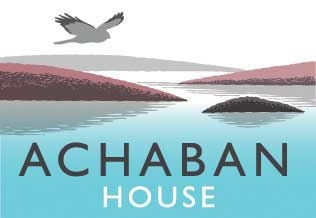


July 6, 2017

Now that we are in the trout fishing season, Loch Pottie, at the bottom of the garden, beckons. On any still, warm evening the sight of the surface of the water literally boiling with trout rises is too much to resist. On closer inspection the trout rises take several forms- from the usual popping the nose out of the water to the more interesting displays of showing the top and tail; showing the back (porpoising] or simply jumping straight out! The best weather for fishing the loch is an overcast day with a warm breeze and we are in such close proximity that we can dodge out with the rod on such opportune weather.
Achaban House has the fishing rights for the Loch and we are pleased to provide permission at no cost for those who knock on our door. In terms of which fly to use, Loch Pottie trout are not fussy. Katie McLaren and Claret Bumble are safe choices but there are a variety of wet, dries and nymph patterns that will probably do the job equally well.
The brown trout that live in Loch Pottie are a numerous, well fed population, rarely larger than half a pound. Our theory is that for once, we should take out the small fish, which are mature, to allow the others to grow larger and provide more than a mouthful! We are catching plenty of trout and although small, they are fat, and very tasty after a spell in the smoker.
The pleasure of fishing at the loch-side is much increased by the tranquillity of the setting, currently enhanced by a flotilla of lilies, and the variety of wildlife spotted while waiting for a rise. This week, both the male and female hen harriers that nest locally have been frequenting the lochside edge. A close sighting of the male harrier with a vole in its beak helped establish the location of the nest by observing the direction in which he flew, to feed the young.
Loch Pottie is pronounced Loch P’tee with the emphasis on the second syllable and is anglicised from the Gaelic, Loch Poit na h-l, which apparently means “Pot of Iona”. The loch was reputedly used as a fish pond by the monks on Iona in the 9th century.